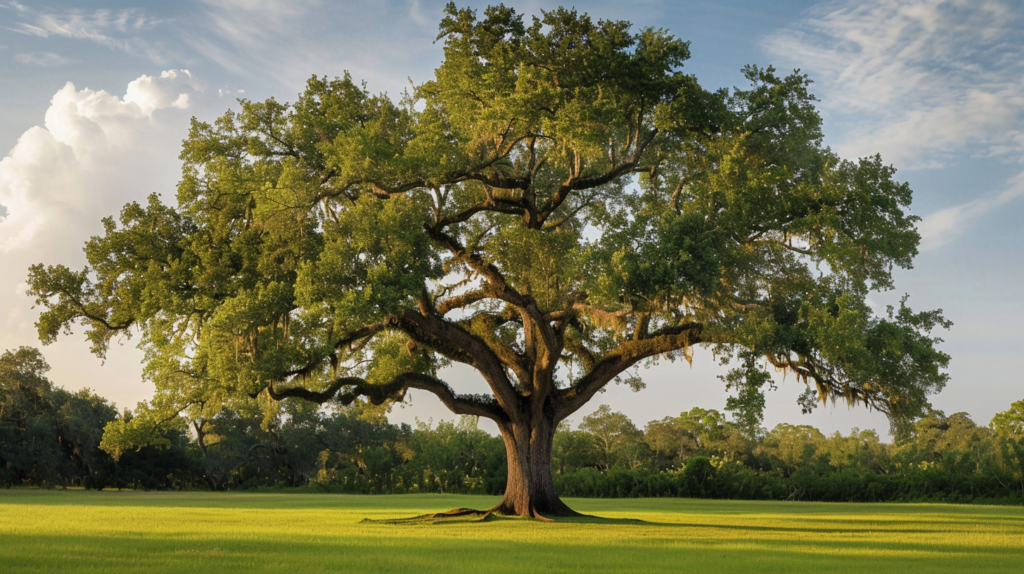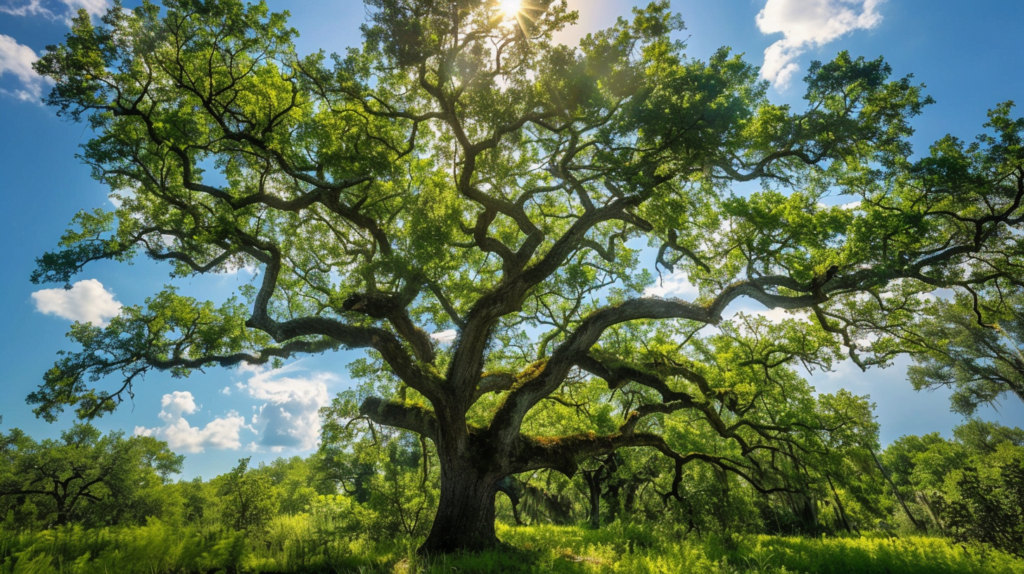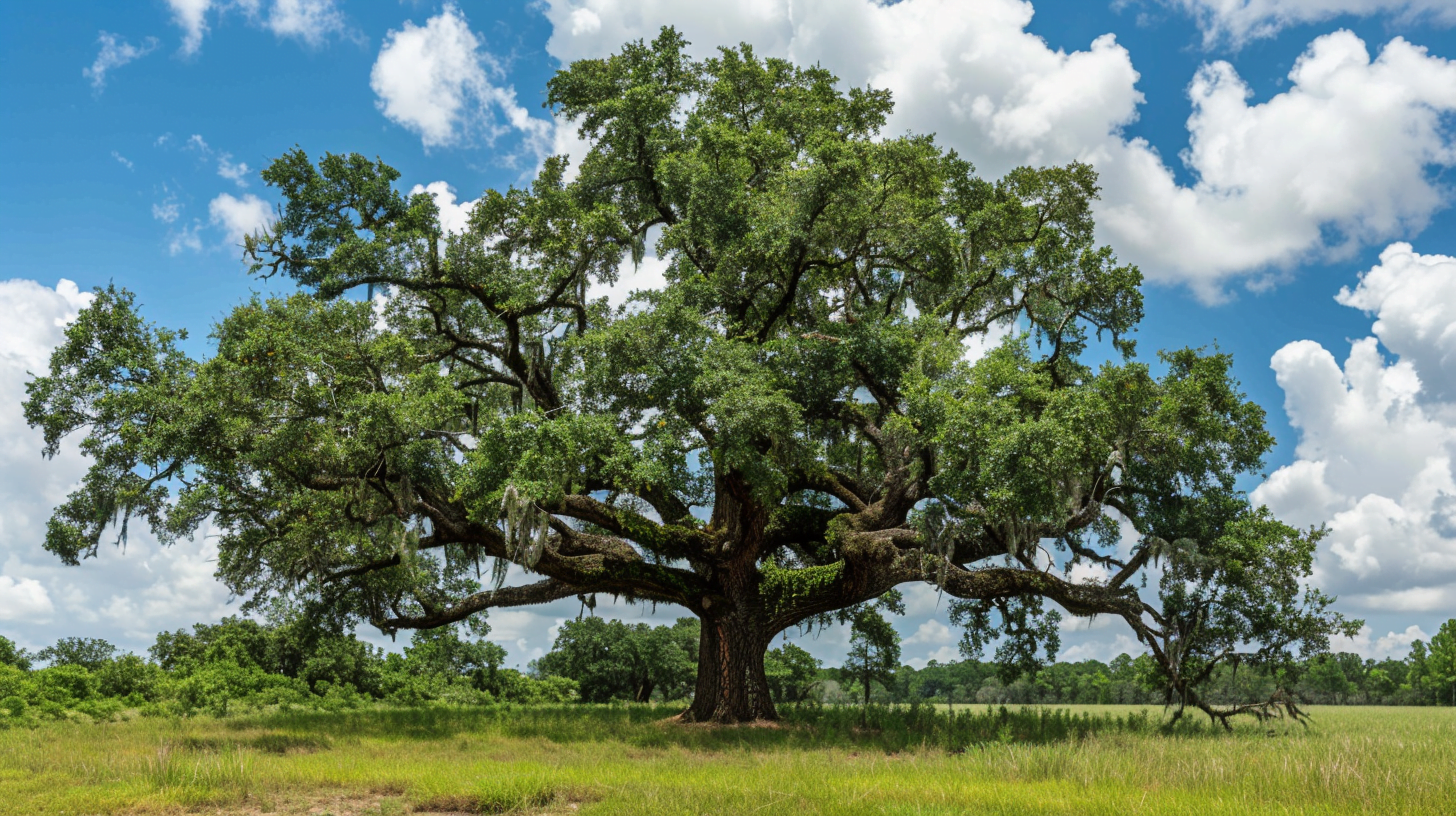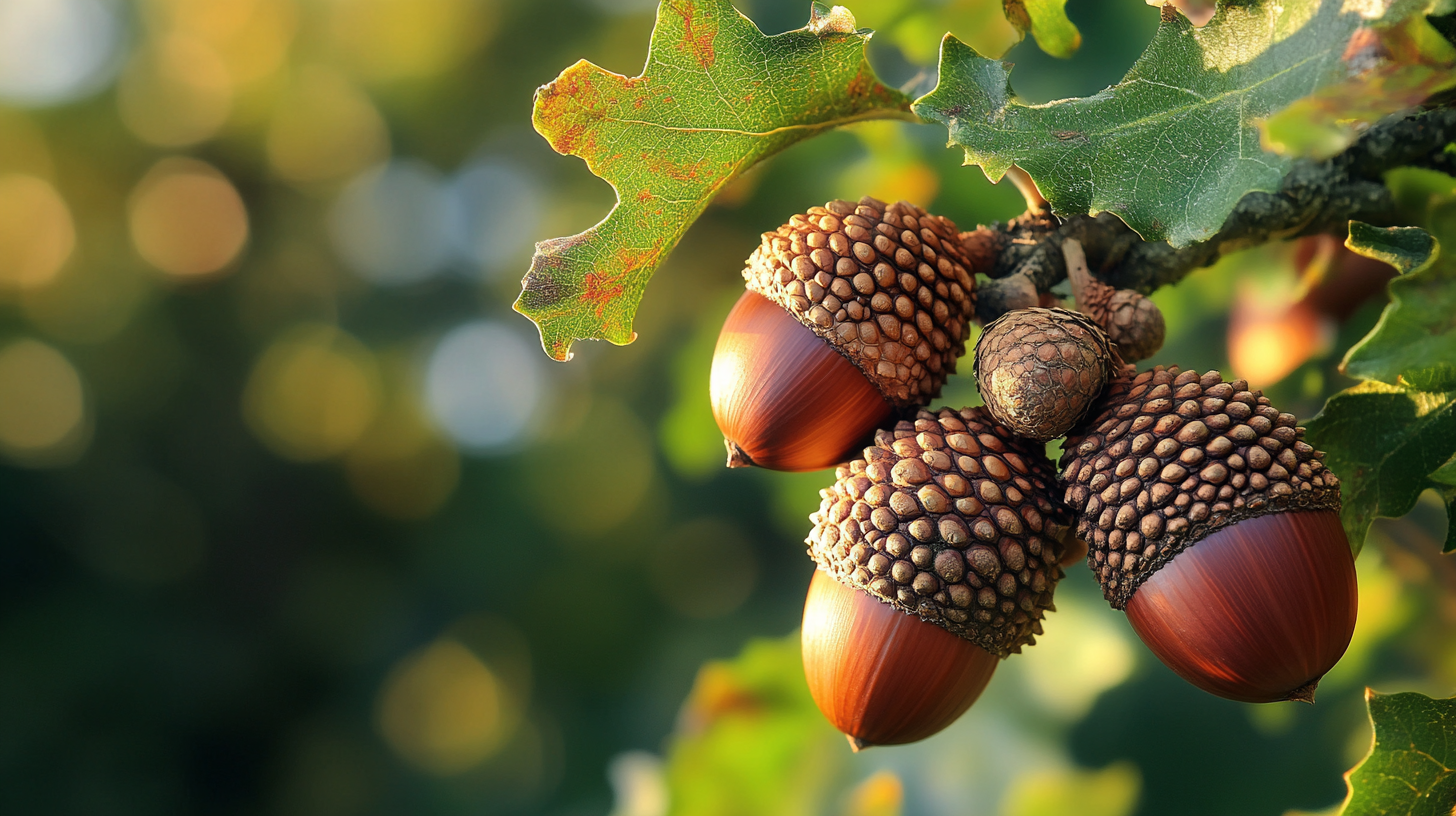Table of Contents
Oak trees are a staple of many landscapes, providing shade, beauty, and a sense of permanence. But can they thrive in Florida’s subtropical climate? The answer is yes, but with some important considerations. In this guide, we’ll delve into the world of oak trees in Florida, exploring the best species for the state, climate and soil requirements, planting and care tips, and the benefits and challenges of growing these magnificent trees.
Types of Oak Trees Suitable for Florida
Live Oak (Quercus virginiana)
The live oak is a popular choice for Florida landscapes, and for good reason. This evergreen tree is well-suited to the state’s warm and humid climate, with a broad canopy and sturdy branches that can withstand strong winds. Live oaks can grow up to 60 feet tall, with a spread of up to 100 feet, making them a great choice for large yards or parks.
Laurel Oak (Quercus laurifolia)
The laurel oak is another popular species for Florida, known for its fast growth rate and tolerance of a wide range of soils. This deciduous tree can grow up to 100 feet tall, with a spread of up to 60 feet, making it a great choice for those looking for a quick shade solution.
Water Oak (Quercus nigra)
The water oak is a common sight in Florida, with its distinctive leaves and ability to thrive in wet soils. This deciduous tree can grow up to 80 feet tall, with a spread of up to 60 feet, making it a great choice for those with wet or flood-prone areas.

Climate and Soil Requirements for Oak Trees in Florida
Climate Considerations
Florida’s subtropical climate can be challenging for oak trees, with high temperatures and humidity levels. However, many oak species are well-suited to these conditions, and with proper care, can thrive in the state. Here are some climate considerations to keep in mind:
- Temperature: Oak trees prefer temperatures between 35°F and 75°F (2°C and 24°C), making Florida’s mild winters and hot summers a good fit.
- Humidity: Oak trees prefer high humidity, which Florida’s coastal location provides.
- Sunlight: Oak trees need full sun to partial shade, making them a great choice for yards with plenty of sunlight.
Soil Requirements
Oak trees prefer well-draining soil with a slightly acidic pH. Here are some soil requirements to keep in mind:
- pH: Oak trees prefer a pH between 6.0 and 6.5, which is slightly acidic to neutral.
- Nutrients: Oak trees need a balanced diet of nutrients, including nitrogen, phosphorus, and potassium.
- Drainage: Oak trees don’t like wet feet, so well-draining soil is essential to prevent root rot.
Planting and Care of Oak Trees in Florida
Planting an Oak Tree in Florida
Planting an oak tree in Florida is a straightforward process, but it does require some planning. Here are the steps to follow:
- Choose the right location: Look for a spot with full sun to partial shade, and well-draining soil.
- Prepare the soil: Dig a hole twice as wide and as deep as the root ball. Add organic matter like compost or manure to improve soil fertility and drainage.
- Plant the tree: Gently remove the tree from its container and place it in the hole. Backfill with soil, tamping it down gently as you go.
- Water thoroughly: Water the tree regularly, especially during its first year of growth.
Ongoing Care
Once your oak tree is planted, it’s essential to provide ongoing care to ensure it thrives. Here are some tips:
- Watering: Water your oak tree regularly, especially during droughts.
- Fertilizing: Fertilize your oak tree annually with a balanced fertilizer.
- Pruning: Prune your oak tree regularly to maintain its shape and promote healthy growth.
Challenges and Considerations for Growing Oak Trees in Florida
Hurricane Damage
Florida’s location makes it prone to hurricanes, which can be devastating for oak trees. Here are some tips to help your oak tree survive a hurricane:
- Prune regularly: Prune your oak tree regularly to reduce its wind resistance and prevent branch failure.
- Stake young trees: Stake young oak trees to prevent them from being uprooted.
- Provide support: Provide support for large branches to prevent them from breaking.
Root Growth
Oak trees have a extensive root system that can cause problems for nearby structures. Here are some tips to manage root growth:
- Plant at a safe distance: Plant your oak tree at a safe distance from nearby structures to prevent root damage.
- Use root barriers: Use root barriers to prevent roots from growing into nearby pipes or foundations.
Oak Wilt
Oak wilt is a fungal disease that can be devastating for oak trees. Here are some tips to prevent oak wilt:
- Avoid wounding the tree: Avoid wounding the tree, as this can provide an entry point for the fungus.
- Use proper pruning techniques: Use proper pruning techniques to prevent the spread of the fungus.
- Remove infected trees: Remove infected trees to prevent the spread of the disease.
Benefits of Growing Oak Trees in Florida
Shade and Beauty
Oak trees provide shade and beauty to any landscape, making them a great choice for those looking to enhance their outdoor space.
Wildlife Habitat
Oak trees provide a habitat for a variety of wildlife, including birds, squirrels, and insects.
Air Quality
Oak trees help to improve air quality by absorbing pollutants and producing oxygen.
Urban Heat Island Effect
Oak trees can help to mitigate the urban heat island effect by providing shade and cooling the air through evapotranspiration.

Conclusion
Growing oak trees in Florida can be a rewarding experience, but it does require some planning and care. By choosing the right species, providing proper care, and being aware of the challenges and considerations, you can enjoy the many benefits of oak trees in your landscape. Whether you’re a homeowner, landscaper, or simply a nature lover, oak trees are a great choice for anyone looking to enhance their outdoor space.
Additional Resources
- Florida Oak Trees: A guide to the different species of oak trees found in Florida.
- Oak Tree Care: Tips and techniques for caring for oak trees in Florida.
- Florida Gardening: A guide to gardening in Florida’s subtropical climate.
By following these tips and considering the unique challenges and benefits of growing oak trees in Florida, you can enjoy the many rewards of these magnificent trees.




